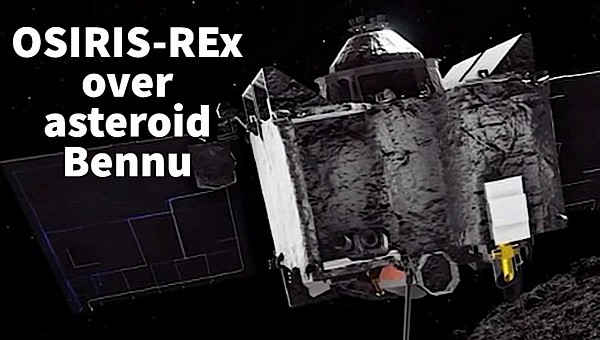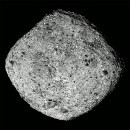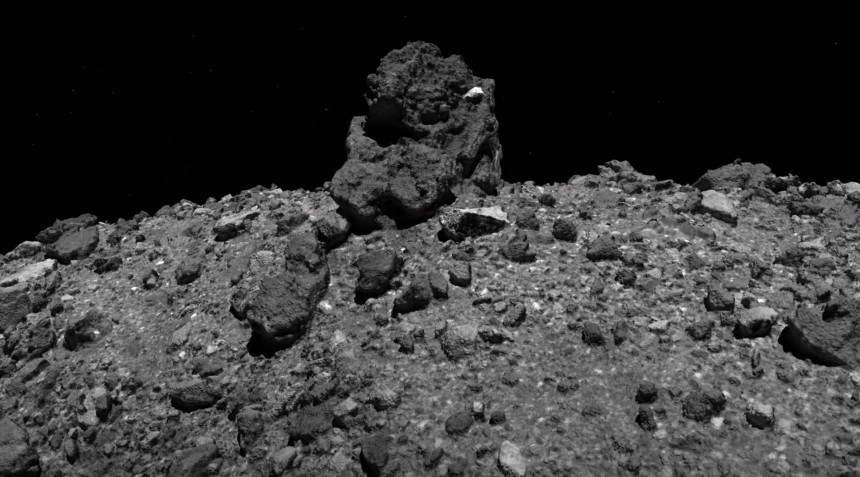It’s not long now until a piece of asteroid Bennu becomes the first piece of alien rock to be delivered to American soil by means of a spacecraft. With an arrival date set for September 24, the OSIRIS-Rex mission already has scientists across America scrambling to make the most of it.
OSIRIS-Rex is a piece of equipment that left Earth back in 2016. It headed out into the darkness of space to find Bennu, which it did two years later. It then proceeded to snatch a small sample from the surface because that was, after all, its mission. The sample is to be delivered to Earth for study this fall.
All of the above may sound complicated, and for all intents and purposes it was, but the real dangers to the small sample of asteroid won’t start until an OSIRIS capsule enters our planet’s atmosphere. Not only will the thing have to protect the sample from the dangers of re-entry, but also human intervention must be swift and decisive enough to avoid it being contaminated with earthly stuff.
The 250 grams or so of regolith from the asteroid will be delivered to the Utah desert, more precisely on the premises of the Department of Defense’s Utah Test and Training Range and Dugway Proving Grounds, by parachute. From there, it will be transported to the new alien sample handling facility NASA is preparing at the Johnson Space Center in Houston, the same location where Perseverance’s Mars samples will be stored once they get here.
After it reaches the location, the sample will be broken down into even smaller pieces and then delivered to science teams across the world for study (not more than a quarter of the total regolith material). A chunk of the sample will be placed in storage, including for future generations to look at.
All this process requires a lot of manpower. Although we’re not told exactly how many people are involved in this, NASA did reveal there will be several teams knee-deep in the process, and they’ve all started rehearsing for that big September day.
First up, two teams in Colorado and Utah will start training on how to recover the capsule safely, while protecting it from contamination. Then, back at Johnson, the so-called curation team will start rehearsing “their procedure to unpack and process the sample inside glove boxes.“ And lastly, the science team is already hard at work getting the science they need to perform on the sample ready.
As for the spaceship that made all this possible, although its Bennu mission will be officially over in September, a new one has already been cooked up for it. When it reaches Earth a few months from now, and after it releases the capsule containing the Bennu sample, the ship will set course for another, much more dangerous asteroid we know as Apophis.
In doing so, it will undergo a name change to OSIRIS-APEX (OSIRIS-APophis EXplorer). This time, snatching a sample of the 1,200 feet (365 meters) is not a goal, but the continuous study of the place for at least one year and a half.
All of the above may sound complicated, and for all intents and purposes it was, but the real dangers to the small sample of asteroid won’t start until an OSIRIS capsule enters our planet’s atmosphere. Not only will the thing have to protect the sample from the dangers of re-entry, but also human intervention must be swift and decisive enough to avoid it being contaminated with earthly stuff.
The 250 grams or so of regolith from the asteroid will be delivered to the Utah desert, more precisely on the premises of the Department of Defense’s Utah Test and Training Range and Dugway Proving Grounds, by parachute. From there, it will be transported to the new alien sample handling facility NASA is preparing at the Johnson Space Center in Houston, the same location where Perseverance’s Mars samples will be stored once they get here.
After it reaches the location, the sample will be broken down into even smaller pieces and then delivered to science teams across the world for study (not more than a quarter of the total regolith material). A chunk of the sample will be placed in storage, including for future generations to look at.
First up, two teams in Colorado and Utah will start training on how to recover the capsule safely, while protecting it from contamination. Then, back at Johnson, the so-called curation team will start rehearsing “their procedure to unpack and process the sample inside glove boxes.“ And lastly, the science team is already hard at work getting the science they need to perform on the sample ready.
As for the spaceship that made all this possible, although its Bennu mission will be officially over in September, a new one has already been cooked up for it. When it reaches Earth a few months from now, and after it releases the capsule containing the Bennu sample, the ship will set course for another, much more dangerous asteroid we know as Apophis.
In doing so, it will undergo a name change to OSIRIS-APEX (OSIRIS-APophis EXplorer). This time, snatching a sample of the 1,200 feet (365 meters) is not a goal, but the continuous study of the place for at least one year and a half.











